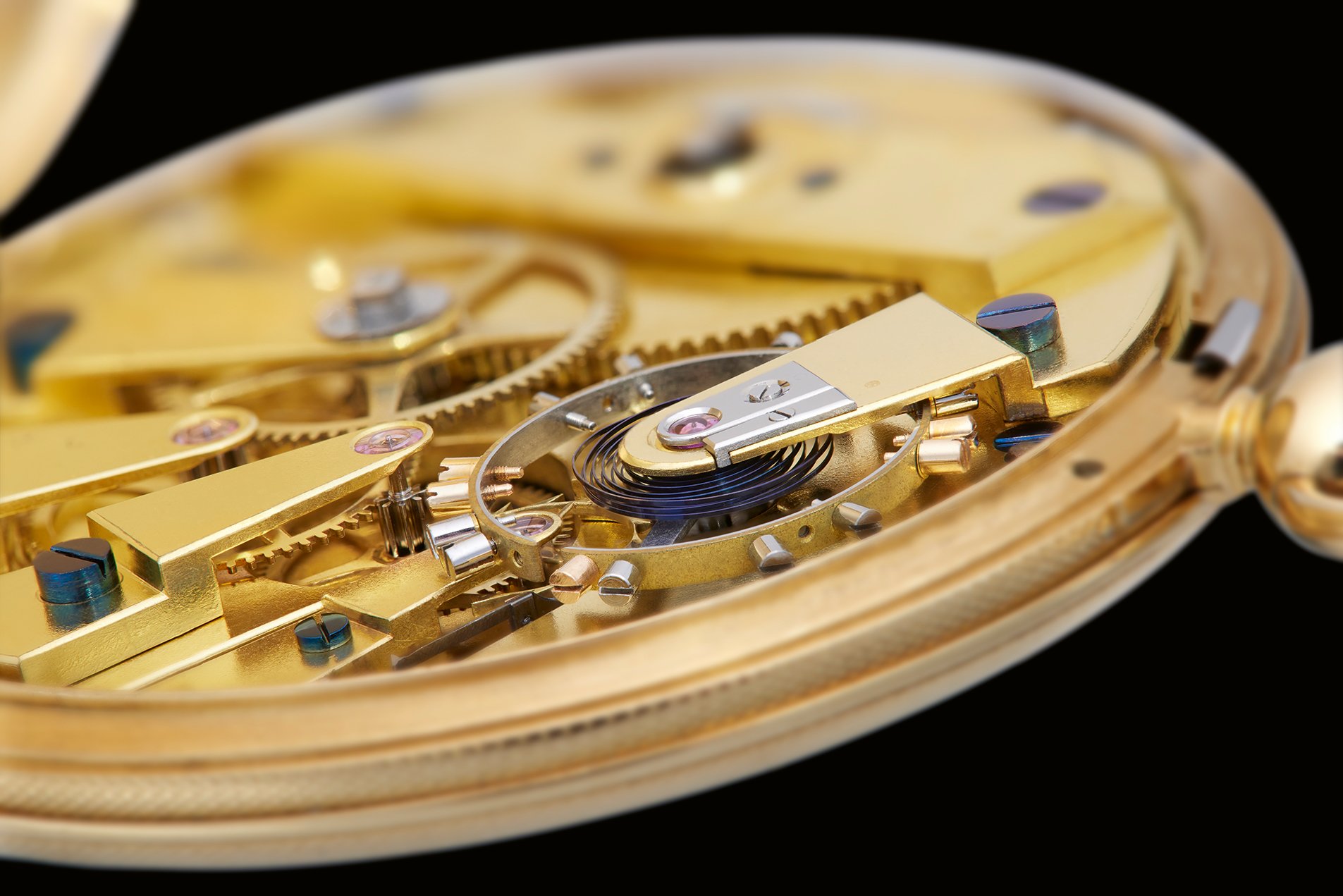ouis Urban Jürgensen’s younger brother, Jules Frederik Jürgensen, was born in 1808 and also studied watchmaking in France, England and Switzerland. After completing his studies, Jules decided to remain in Switzerland and established his own company in Le Locle in 1836. The Swiss authorities treated his company as a branch of Urban Jürgensen & Sonner in Copenhagen.
Jules gained a prominent reputation through his studies of hairsprings and balances, and learned techniques to create more straightforward movements. He began producing increasingly complex, more prestigious timepieces, including repeating watches and chronographs. He gradually started to use lever escapements for everyday pocket watches, whereas high-end precision timepieces would have chronometer or detent escapements.
-

- Jules Jürgensen – no. 64 (1835-36). Unusual dial layout, very elegant dial and case design. White enamel dial. Very small signature at 12 o’clock.
Business thrived, and he produced 500 to 600 watches annually. Jules’ goal was to create thinner, more elegant watches. As his business expanded, in 1846 he purchased a plot of land and built new premises for his company. He also bought up several suppliers to support his growing business. In 1872, he relocated to Geneva, to a property he had acquired in the heart of the city.
Jules Frederik had two sons who became watchmakers: Jules Frederic Urban, also known as Jules II, and Jacques Alfred. Jules II, born in 1837, took over his father’s company in 1872 after the relocation to Geneva. He made watches for everyday use and also produced a substantial number of repeaters, chronographs and calendar mechanisms. His brother, Jacques Alfred, set up his own company in 1865 under the name Jacques Alfred Jürgensen Locle. He worked in the same premises as his brother, primarily making movements for him. They even shared employees and workshop tools. Later, Jacques Alfred also produced watches under his own name.
-

- Movement: gilt 18-ligne Lepine-type movement with Earnshaw-type spring detent escapement. Split bi-metallic balance in brass and steel with 16 screws. No regulator. Dual-level blued steel hairspring – rather than a flat cylindrical hairspring, it has two springs that are connected. The movement is of Jules Jürgensen’s own design.
Jules II died in 1894 and his son Jules Philippe inherited the company. However, due to a lack of both ability and interest, Jacques Alfred eventually bought the company in 1897. In 1898, he merged his own company with his brother’s, forming Jules Jürgensen Copenhagen. Jacques Alfred Jürgensen died in 1912, and his wife inherited the company. She eventually sold it to David Golay, a business partner of the Jürgensen Company. The transaction was completed in 1917.







